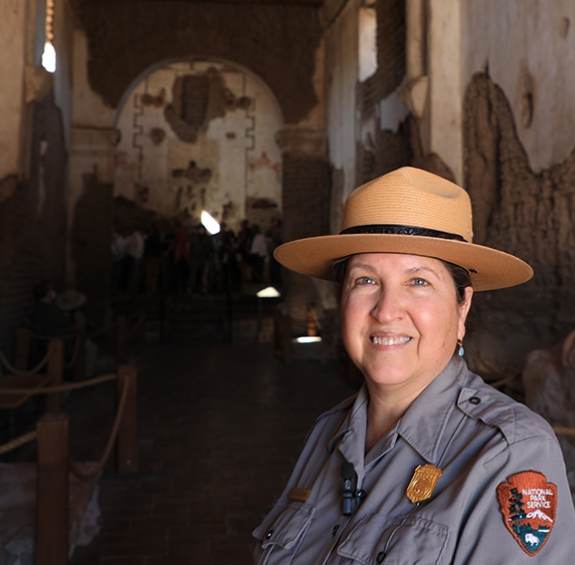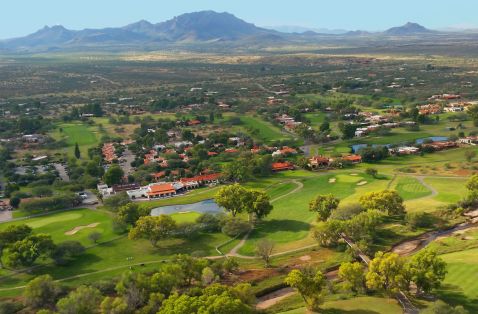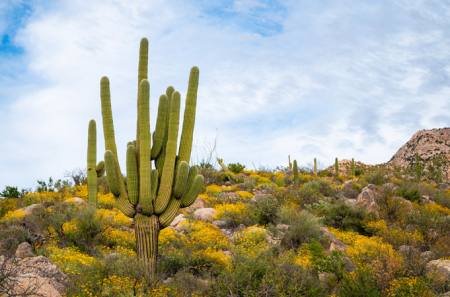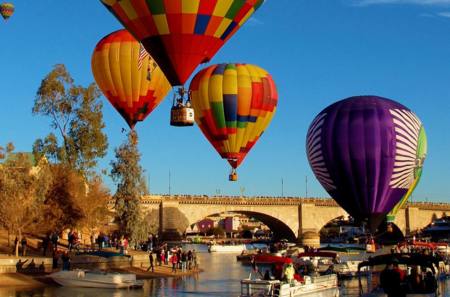Tumacácori National Historical Park
Visit a 19th-century Franciscan mission at one of the oldest national park sites in the United States.
Arizona’s missions tell the story of Spanish exploration and colonization of indigenous people. Jesuit missionary Father Francisco Kino visited this site along the Santa Cruz River in 1691. Missions built during the exploration era became the centers of communities and introduced European farming techniques and cultural customs to indigenous people. Visitors to Tumacácori can easily add Mission San Xavier Del Bac to the history lesson by heading 35 miles north on I-19.
Tour the Site
Long before the missionaries arrived, this area was home to the Tohono O’odham, Pima, Apache, Yaqui and Mexican communities. Located along the banks of the Santa Cruz River, the compound at Tumacácori features a large church structure surrounded by remnants of other village buildings, a cemetery and a replica of a traditional O’odham dwelling. Visitors tour the visitor center and museum before walking inside the ruins to carefully explore the fragile structures. The park also preserves two missions at remote sites to the south. Visits to Guevavi and Calabasas missions are offered on reserved tours January through April.
Hike the Anza Trail
Nearby Tubac is one of Arizona’s oldest European communities, established in 1752. Juan Bautista de Anza led two overland expeditions to the Pacific Ocean in the 1770s, which ultimately led to the founding of San Francisco. The Juan Bautista de Anza National Historic Trail follows the Santa Cruz River through this scenic countryside. Visitors can retrace the steps with a 4.5-mile hike along the Santa Cruz River between Tumacácori and Tubac. This short stretch of the Anza Trail highlights one of the most important chapters in Arizona’s history.
"Tumacácori is probably not one of those places you have heard of before; it is a bit of an unknown gem. People will be driving down here and see the sign on the side of the road with no clue how to pronounce Tumacácori or what it even is. Those that take a chance and visit the unknown, are universally delighted they did.
We hear things like, 'it is so peaceful;' 'I can really feel the history;' 'I could feel the people from the past here,' " and of course, they love the tortillas. These things are what makes Tumacácori National Historical Park so special."
– Anita Badertscher, Chief of Interpretation and Education

Find Surprising Shops
Across the street from the mission site, visitors find one of Southern Arizona’s oldest businesses. At Santa Cruz Chili & Spice Company, in operation since 1943, visitors smell chiles roasting as they approach the front door. Inside, the flavors from agricultural lands along the Santa Cruz River shine. Just up the I-10 frontage road, the village of Tubac has dozens of shops that carry Mexican imports plus jewelry and art created by area makers. If the tortillas served at Tumacácori and the frybread at San Xavier weren’t enough, find great restaurants in Tubac that serve authentic Sonoran dishes.
ACCESSIBILITY
- The visitor center, museum, restrooms and the mission grounds are fully wheelchair accessible.
- For guests who are deaf or have hearing issues, a personal amplifier is available for use during the park film, which also is subtitled.
- Additionally, the film has been adapted with audio descriptions for the visually impaired (headsets can be borrowed at the visitor center).
For more information
Tumacácori National Historical Park
PO Box 8067
Tumacacori, AZ 85640
(520) 377-5060
More to Explore Near Tumacacori National Historical Park
Tubac Presidio State Historic Park
Visit the oldest Spanish Colonial presidio site in Arizona.
Cities
Tucson
Visit Arizona’s second-largest city, a UNESCO City of Gastronomy and a year-round outdoor playground. You can be secluded or social in Tucson....
Cities
Tubac
Spend some time in this Spanish Presidio turned artist colony, where creativity is as present in the galleries and shops as it is in restaurant...








